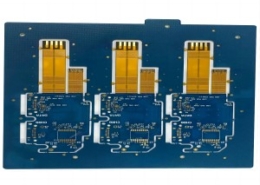Is PCB board size marking really that important?

Is PCB board size marking really that important?
We are looking forward to working together with you.
[May 11, 2023]
PCB board dimensioning plays a vital role in circuit design and production. It not only ensures the normal operation of the circuit board, but also improves production efficiency and reduces costs. This article will elaborate on the importance of PCB board dimension marking from four aspects, including design specifications, production process, assembly process and reliability testing.
1. Design specifications
PCB board size marking plays an important role in the early stage of circuit design. Reasonable dimensioning can ensure the stability of the connection and installation of the circuit board and external devices, and avoid connection problems and poor signal transmission caused by inappropriate dimensions. In addition, accurate dimensioning can also help designers better control the size and shape of circuit boards during layout to adapt to different application scenarios.
2. Production process
PCB board size marking also has an important impact on the circuit board production process. Reasonable dimensioning can help manufacturers accurately cut circuit boards and avoid waste and repeated processing caused by size discrepancies. In addition, dimensional markings can also guide production personnel in drilling, mounting and other process operations, improving production efficiency and product quality.
3. Assembly process
PCB board size marking also plays a vital role in the circuit board assembly process. Accurate dimensioning can help assemblers install components correctly and avoid problems such as component misalignment and poor welding caused by size discrepancies. In addition, dimensional markings can also guide assembly personnel in welding, testing and other process operations, improving assembly efficiency and product quality.
4. Reliability test
PCB board size marking is also very important for circuit board reliability testing. Reasonable dimensioning can help testers install test equipment accurately and ensure test accuracy and reliability. In addition, dimensional markings can also guide testers to perform operations such as signal testing and temperature testing, improving test efficiency and reliability of results.
From the four aspects of design specifications, production process, assembly process and reliability testing, the importance of PCB board size marking cannot be ignored. Reasonable dimensioning can ensure the normal operation of circuit boards and improve production efficiency and product quality. Therefore, in circuit design and production, we should pay attention to the dimension marking of PCB boards and rationally use marking technology to ensure the stability and reliability of the circuit board.
We are looking forward to working together with you.
[May 11, 2023]
To identify the quality of a PCB circuit board, the following factors can be considered: 1. Accuracy of size: Check whether the size of the PCB is accurate and whether it meets the design specifications.
By considering these factors and performing quality tests, you can ensure that your PCB board meets the quality standards required for your application.